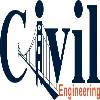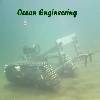Which Program Track Do You Want to Study?
There are more than 25 engineering programs that are Accreditation Board for Engineering and Technology (ABET) accredited. Listed below are a few of them:
Biomedical Engineering
 Biomedical engineering is an interdisciplinary area in which engineering techniques
are applied to problem solving in the life sciences and medicine. Biomedical engineers
work in such areas as artificial organs, automated patient monitoring, and blood chemistry
sensors, just to mention a few. They analyze and design solutions to problems in biology
and medicine, with the goal of improving the quality and effectiveness of patient
care.
Biomedical engineering is an interdisciplinary area in which engineering techniques
are applied to problem solving in the life sciences and medicine. Biomedical engineers
work in such areas as artificial organs, automated patient monitoring, and blood chemistry
sensors, just to mention a few. They analyze and design solutions to problems in biology
and medicine, with the goal of improving the quality and effectiveness of patient
care.
Chemical Engineering
 Chemical engineering incorporates strong emphasis on three sciences: chemistry, physics,
and mathematics. Chemical engineers apply these sciences to solve problems that involve
the production or use of chemicals, fuel, drugs, food, and many other products. They
design processes and equipment for large-scale safe and sustainable manufacturing,
plan and test methods of manufacturing products and treating byproducts, and supervise
production.
Chemical engineering incorporates strong emphasis on three sciences: chemistry, physics,
and mathematics. Chemical engineers apply these sciences to solve problems that involve
the production or use of chemicals, fuel, drugs, food, and many other products. They
design processes and equipment for large-scale safe and sustainable manufacturing,
plan and test methods of manufacturing products and treating byproducts, and supervise
production.
Civil Engineering
 Civil engineering is by far the oldest engineering branch. Civil engineers design,
construct, supervise, operate, and maintain large construction projects and systems,
including roads, buildings, airports, tunnels, dams, bridges, and systems for water
supply and sewage treatment.
Civil engineering is by far the oldest engineering branch. Civil engineers design,
construct, supervise, operate, and maintain large construction projects and systems,
including roads, buildings, airports, tunnels, dams, bridges, and systems for water
supply and sewage treatment.
Computer Engineering
 Computer engineering spans the fields of computer science and engineering giving a
balanced view of hardware, software, hardware-software trade-offs, and basic modeling
techniques. Computer engineers research, design, develop, and test computer systems
and components such as processors, circuit boards, memory devices, networks, and routers.
By creating new directions in computer, these engineers create rapid advances in computer
technology.
Computer engineering spans the fields of computer science and engineering giving a
balanced view of hardware, software, hardware-software trade-offs, and basic modeling
techniques. Computer engineers research, design, develop, and test computer systems
and components such as processors, circuit boards, memory devices, networks, and routers.
By creating new directions in computer, these engineers create rapid advances in computer
technology.
Electrical Engineering
 Electrical engineering ranges from the generation and delivery of electrical power
to the use of electricity in integrated circuits. Electrical engineers design, develop,
test, and supervise the manufacturing of electrical equipment, such as electric motors,
radar and navigation systems, communications systems, and power generation equipment.
Electronics engineers design and develop electronic equipment, such as broadcast and
communications systems—from portable music players to global positioning systems (GPS).
Electrical engineering ranges from the generation and delivery of electrical power
to the use of electricity in integrated circuits. Electrical engineers design, develop,
test, and supervise the manufacturing of electrical equipment, such as electric motors,
radar and navigation systems, communications systems, and power generation equipment.
Electronics engineers design and develop electronic equipment, such as broadcast and
communications systems—from portable music players to global positioning systems (GPS).
Industrial & Systems Engineering
 Industrial engineering is the design, improvement, and installation of integrated
systems of people, material, and energy. It is an interdisciplinary field that involves
the integration of technology, mathematical models, and management practices Industrial
engineers find ways to eliminate wastefulness in production processes. They devise
efficient ways to use workers, machines, materials, information, and energy to make
a product or provide a service.
Industrial engineering is the design, improvement, and installation of integrated
systems of people, material, and energy. It is an interdisciplinary field that involves
the integration of technology, mathematical models, and management practices Industrial
engineers find ways to eliminate wastefulness in production processes. They devise
efficient ways to use workers, machines, materials, information, and energy to make
a product or provide a service.
Mechanical Engineering
 Mechanical engineering is one of the largest and broadest engineering disciplines.
It is second only to electrical engineering in the number of engineers employed in
the field. Some specialty areas of mechanical engineering are: applied mechanics;
control; design; fluids; and thermodynamics. Mechanical engineers design, develop,
build, and test mechanical and thermal devices, including tools, engines, and machines.
Mechanical engineering is one of the largest and broadest engineering disciplines.
It is second only to electrical engineering in the number of engineers employed in
the field. Some specialty areas of mechanical engineering are: applied mechanics;
control; design; fluids; and thermodynamics. Mechanical engineers design, develop,
build, and test mechanical and thermal devices, including tools, engines, and machines.
Ocean Engineering
 Ocean engineering is a multidisciplinary field of technology applied to the ocean
environment. It is a combination of the classical engineering disciplines such as
civil, mechanical and electrical engineering, with naval architecture and applied
oceanography. Ocean engineers design, build, operate, and maintain ships and offshore
structures. They study the oceans to determine the effects of waves, currents and
the salt water environment on ships and other marine vehicles and structures.
Ocean engineering is a multidisciplinary field of technology applied to the ocean
environment. It is a combination of the classical engineering disciplines such as
civil, mechanical and electrical engineering, with naval architecture and applied
oceanography. Ocean engineers design, build, operate, and maintain ships and offshore
structures. They study the oceans to determine the effects of waves, currents and
the salt water environment on ships and other marine vehicles and structures.